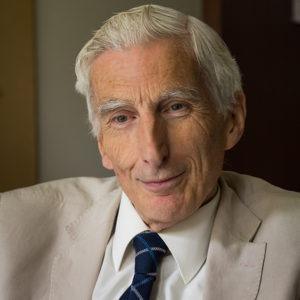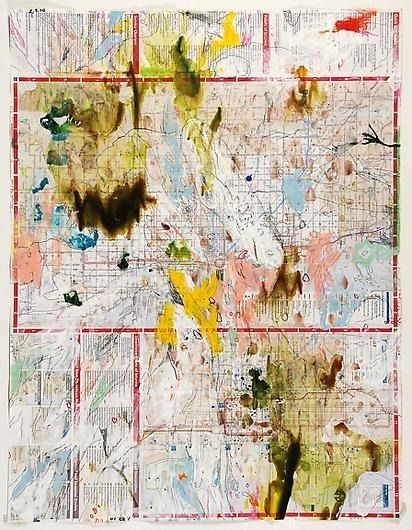Annaka Harris in Nautilus:
 The great mystery of consciousness is why matter lights up with felt experience. After all, we are composed of particles indistinguishable from those swirling around in the sun; the atoms that compose your body were once the ingredients of countless stars in our universe’s past. They traveled for billions of years to land here—in this particular configuration that is you—and are now reading these words. Imagine following the life of those atoms from their first appearance in spacetime to the very moment they became arranged in such a way as to start experiencing something.
The great mystery of consciousness is why matter lights up with felt experience. After all, we are composed of particles indistinguishable from those swirling around in the sun; the atoms that compose your body were once the ingredients of countless stars in our universe’s past. They traveled for billions of years to land here—in this particular configuration that is you—and are now reading these words. Imagine following the life of those atoms from their first appearance in spacetime to the very moment they became arranged in such a way as to start experiencing something.
Many assume there is probably no felt experience associated with the microscopic collection of cells that make up a human blastocyst. But over time these cells multiply and slowly become a human baby, able to detect changes in light and recognize its mother’s voice, even while in the womb. And, unlike a computer, which can also detect light and recognize voices, this processing is accompanied by an experience of light and sound. First, as far as consciousness is concerned there is nothing, and then suddenly, magically … something. The mystery lies in the transition. However minimal that initial something is, experience apparently ignites in the inanimate world, materializing out of the darkness.
But how does felt experience arise out of non-sentient matter? The Australian philosopher David Chalmers famously termed this the “hard problem” of consciousness.1 Unlike the “easy problems” of explaining behavior or understanding which processes in the brain give rise to various functions, the hard problem lies in understanding why some of these physical processes have an experience associated with them at all. And the fact that the hard problem has persisted for so many decades, despite the advances in neuroscience, has caused some scientists to wonder if we’ve been thinking about the problem backward. Rather than consciousness arising when non-conscious matter behaves a particular way, is it possible that consciousness is an intrinsic property of matter—that it was there all along?
More here.

 Violence has become a familiar feature of many of the places convulsed by protests around the world—especially when the government gets involved. Such is the case in
Violence has become a familiar feature of many of the places convulsed by protests around the world—especially when the government gets involved. Such is the case in  You watch John Mulaney in his new Netflix special, Kid Gorgeous at Radio City, and it’s hard not to think he was made in some lab to do stand-up. I like to describe him as the LeBron James of comedy, in that he is great at everything a stand-up can be good at. But it wasn’t always that way. Once upon a time, Mulaney was a clever young man, bombing specifically for audiences who paid to see him. Everything changed after the worst set of his life, one fateful night in New Jersey. It’s the story of how he got his joke about $100 million movies to work.
You watch John Mulaney in his new Netflix special, Kid Gorgeous at Radio City, and it’s hard not to think he was made in some lab to do stand-up. I like to describe him as the LeBron James of comedy, in that he is great at everything a stand-up can be good at. But it wasn’t always that way. Once upon a time, Mulaney was a clever young man, bombing specifically for audiences who paid to see him. Everything changed after the worst set of his life, one fateful night in New Jersey. It’s the story of how he got his joke about $100 million movies to work. Anyone who has read histories of the Cold War, including the
Anyone who has read histories of the Cold War, including the  In August 1958, gangs of white youths began systematically attacking West Indians in London’s Notting Hill, assaulting them with iron bars and meat cleavers and milk bottles.
In August 1958, gangs of white youths began systematically attacking West Indians in London’s Notting Hill, assaulting them with iron bars and meat cleavers and milk bottles.  THE ROMANIAN DIRECTOR Corneliu Porumboiu may be the most epistemologically preoccupied filmmaker this side of Errol Morris, but, having spent his first fourteen years living under the dictator Nicolae Ceaușescu’s Père Ubu–ist regime, his sense of the absurd is second nature.
THE ROMANIAN DIRECTOR Corneliu Porumboiu may be the most epistemologically preoccupied filmmaker this side of Errol Morris, but, having spent his first fourteen years living under the dictator Nicolae Ceaușescu’s Père Ubu–ist regime, his sense of the absurd is second nature. A truly literary history eludes most working historians. Their books are too often weighed down by specialist jargon, and they know that neglecting scholarly trappings—extensive footnotes, name-checking fellow historians—means risking professional irrelevance. It is nearly impossible to reach that most coveted literary destination: a serious argument delivered with a light touch.
A truly literary history eludes most working historians. Their books are too often weighed down by specialist jargon, and they know that neglecting scholarly trappings—extensive footnotes, name-checking fellow historians—means risking professional irrelevance. It is nearly impossible to reach that most coveted literary destination: a serious argument delivered with a light touch. A YEAR BEFORE ANNA KAVAN WAS FOUND DEAD
A YEAR BEFORE ANNA KAVAN WAS FOUND DEAD There are many arguments for theism, most of them not worth rehearsing. The ontological argument, first formulated by St Anselm in the 11th century and reframed by the 17th-century French rationalist René Descartes (1596-1650), maintains that God must exist because humans have an idea of a perfect being and existence is necessary to perfection. Since many of us have no such idea, it is a feeble gambit. The arguments of creationists are feebler, since they involve concocting a theory of intelligent design to fill gaps in science that the growth of knowledge may one day close. The idea of God is not a pseudo-scientific speculation.
There are many arguments for theism, most of them not worth rehearsing. The ontological argument, first formulated by St Anselm in the 11th century and reframed by the 17th-century French rationalist René Descartes (1596-1650), maintains that God must exist because humans have an idea of a perfect being and existence is necessary to perfection. Since many of us have no such idea, it is a feeble gambit. The arguments of creationists are feebler, since they involve concocting a theory of intelligent design to fill gaps in science that the growth of knowledge may one day close. The idea of God is not a pseudo-scientific speculation. Are humans the only animals that caucus? As the early 2020 presidential election season suggests, there are probably more natural and efficient ways to make a group choice. But we’re certainly not the only animals on Earth that vote. We’re not even the only primates that primary. Any animal living in a group needs to make decisions as a group, too. Even when they don’t agree with their companions, animals rely on one another for protection or help finding food. So they have to find ways to reach consensus about what the group should do next, or where it should live. While they may not conduct continent-spanning electoral contests like this coming Super Tuesday, species ranging from primates all the way to insects have methods for finding agreement that are surprisingly democratic. As meerkats start each day, they emerge from their burrows into the sunlight, then begin searching for food. Each meerkat forages for itself, digging in the dirt for bugs and other morsels, but they travel in loose groups, each animal up to about 30 feet from its neighbors, says Marta Manser, an animal-behavior scientist at the University of Zurich in Switzerland. Nonetheless, the meerkats move as one unit, drifting across the desert while they search and munch.
Are humans the only animals that caucus? As the early 2020 presidential election season suggests, there are probably more natural and efficient ways to make a group choice. But we’re certainly not the only animals on Earth that vote. We’re not even the only primates that primary. Any animal living in a group needs to make decisions as a group, too. Even when they don’t agree with their companions, animals rely on one another for protection or help finding food. So they have to find ways to reach consensus about what the group should do next, or where it should live. While they may not conduct continent-spanning electoral contests like this coming Super Tuesday, species ranging from primates all the way to insects have methods for finding agreement that are surprisingly democratic. As meerkats start each day, they emerge from their burrows into the sunlight, then begin searching for food. Each meerkat forages for itself, digging in the dirt for bugs and other morsels, but they travel in loose groups, each animal up to about 30 feet from its neighbors, says Marta Manser, an animal-behavior scientist at the University of Zurich in Switzerland. Nonetheless, the meerkats move as one unit, drifting across the desert while they search and munch.
 What is commonsense to most people who received a K-12 public education in the United States is that every formal system of state schooling throughout the modern world is designed to educate its students to develop, what Charles Lemert calls “sociologically competencies” within whatever ideological system is dominating at the time of their schooling. People correctly assume that children going to school during the Weimar Republic, for example, were educated to function competently within that ideological system. Children who were in school during the reign of Chairman Mao in the People’s Republic of China were educated to function competently within that system. Children in China today are educated to be sociologically competent in China’s current government and economic system. Children in France, Spain, Portugal, Israel, Mexico, Argentina, Brazil, and Iran likewise are educated to function competently in those systems. In the Soviet Union, children were educated to function within its version of communism. After the collapse of the Soviet Union, children were required to learn different civic knowledge and skills in order to be competent within the newly emerging political ideologies of reformed nation states.
What is commonsense to most people who received a K-12 public education in the United States is that every formal system of state schooling throughout the modern world is designed to educate its students to develop, what Charles Lemert calls “sociologically competencies” within whatever ideological system is dominating at the time of their schooling. People correctly assume that children going to school during the Weimar Republic, for example, were educated to function competently within that ideological system. Children who were in school during the reign of Chairman Mao in the People’s Republic of China were educated to function competently within that system. Children in China today are educated to be sociologically competent in China’s current government and economic system. Children in France, Spain, Portugal, Israel, Mexico, Argentina, Brazil, and Iran likewise are educated to function competently in those systems. In the Soviet Union, children were educated to function within its version of communism. After the collapse of the Soviet Union, children were required to learn different civic knowledge and skills in order to be competent within the newly emerging political ideologies of reformed nation states.
 Notwithstanding the spread of English as a global lingua franca, translation continues to be a vital component of international relations, whether political, commercial, or cultural. In certain cases, translation is also necessary nationally, for instance in countries comprising more than one significant linguistic group. This is so in Switzerland, which voted by an overwhelming majority in 1938 to add a fourth national tongue to thwart the irredentist aspirations of its Italian neighbor, and which in certain contexts is obliged to use a Latin version of its own name (Confoederatio Helvetica) to avoid favoring one language group over another.
Notwithstanding the spread of English as a global lingua franca, translation continues to be a vital component of international relations, whether political, commercial, or cultural. In certain cases, translation is also necessary nationally, for instance in countries comprising more than one significant linguistic group. This is so in Switzerland, which voted by an overwhelming majority in 1938 to add a fourth national tongue to thwart the irredentist aspirations of its Italian neighbor, and which in certain contexts is obliged to use a Latin version of its own name (Confoederatio Helvetica) to avoid favoring one language group over another. If you listen to that track as featured in the mix, my judgment may seem a little harsh. The track is on the static side, but that’s hardly a fault in the context: the textures are lovely, and there’s plenty of movement; and at under four minutes it can’t really be said to overstay its welcome. A minor work, perhaps, but as a brief linking interlude it works perfectly well. So what’s the problem?
If you listen to that track as featured in the mix, my judgment may seem a little harsh. The track is on the static side, but that’s hardly a fault in the context: the textures are lovely, and there’s plenty of movement; and at under four minutes it can’t really be said to overstay its welcome. A minor work, perhaps, but as a brief linking interlude it works perfectly well. So what’s the problem?
 front of some her UC Berkeley colleagues, Doudna shared, “a story … about some research … that led in an unexpected direction … ” producing “ … some science that has profound implications going forward…but also makes us really think about what it means to be human and what it means to have the power to manipulate the very code of life …”
front of some her UC Berkeley colleagues, Doudna shared, “a story … about some research … that led in an unexpected direction … ” producing “ … some science that has profound implications going forward…but also makes us really think about what it means to be human and what it means to have the power to manipulate the very code of life …”